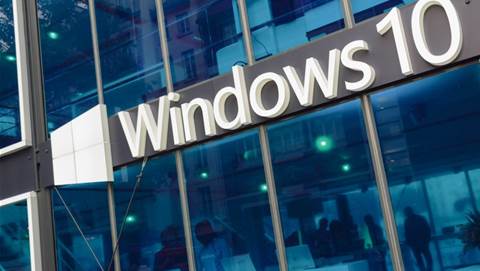It worked wonders for Australia’s Department of Human Services and Yarra Valley Water, and is on the rise in the United States and Canada. Is insourcing, the process of rebuilding internal IT after a period of outsourcing, the new black?

A new report by IT metrics firm Computer Economics found that spending on IT outsourcing represented a shrinking percentage of total US IT budgets for the first time in four years.
Computer Economics found US and Canadian organisations spent 11.9 percent of their total IT budget on outsourced service providers in 2012, but only 10.6 percent in 2013.
“There is anecdotal evidence that organisations are starting to 'back-source' their IT services, bringing them back in-house after a period of growth in the use of service providers,” the report authors noted.
Several Australian IT shops are doing the same - most notably Australia’s Department of Human Services and Yarra Valley Water.
DHS has consolidated IT staff and services from across multiple agencies to build a veritable IT army in Canberra as part of the Australian Government’s 'service delivery reform' agenda, at the expense of outsourcing agreements with IBM and HP.
Gary Sterrenberg, CIO at the Department of Human Services told iTnews that bringing IT in-house has proven both “more efficient and cost effective than previous arrangements.”
The insourcing effort removed duplication between similar agencies, he said, noting the cost reductions achieved by consolidating internet gateways as one example.
Further, insourcing led to more proactive service management and more reliable services due to a “much greater visibility and control over all the ICT components that contribute to a service.”
Sterrenberg cautions only that Centrelink, the largest of the DHS agencies, had “a strong base of technical resources to build on” to ensure shared services success.
Smaller organisations are nonetheless reporting similar success.
Yarra Valley Water doubled its IT staff over 2011/12 after withdrawing from an outsourcing deal with Fujitsu, halving the number of IT outages, lowering operating costs by 15 percent, and increasing user satisfaction with IT from 50 percent to over 80 percent. Such was the strength of the utility’s story, peers voted CIO Leigh Berrell as Utilities CIO of the Year.
“Insourcing is certainly a viable option to consider,” Berrell told iTnews. “Every time I discuss our insourcing journey with other IT leaders I see tremendous interest in understanding how we approached it, what the challenges were, and where we are experiencing the benefits. Those I've met who have initiated insourcing projects of varying size are almost universally satisfied with their outcome.
"Certainly, there is a sense that outsourcing isn’t the panacea it was sold to be, and folks are looking to regain control over their costs and performance.”
But according to IDC IT services analyst Raj Mudaliar, DHS and Yarra Valley Water are exceptions to the rule in Australia. Many of their counterparts are skipping insourcing to switch straight to the cloud.
“The trend in the Australian IT services is a transition from traditional models of IT consumption to those that are cloud-based,” he said.
Mudaliar said Australia has been an aggressive adopter of SaaS for email, collaboration and CRM, and that even those organisations looking at private and hybrid cloud solutions for core systems are looking to host them in data centres run by external service providers.
US vs Australian experience
So why are DHS and Yarra Valley Water exceptions? Why are more US organisations boosting IT budgets at the expense of outsourcing, and why aren't Australian organisations following suit?
For some analysts, the Computer Economics data validates the idea of a narrowing gap between IT wages in the US and India, where a generous portion of IT outsourcing tends to flow. When an Indian help-desk worker cost one-fifth that of a US equivalent, the labour arbitrage equation made a lot of sense. But as Indian IT wages rise (growing by some 10 percent versus flat US wage growth), that equation becomes less attractive.
Outsourcing consultants, in response, have noted that even at those growth rates, it would take another decade for Indian IT wages to match those in the US.
In any case, IT wages are relatively higher again in Australia and overall wage growth has been fairly settled at around three percent. Regardless of what happens in the US, the labour arbitrage argument will likely remain valid to Australian organisations for some time yet.
There are other distinctions between the US and Australia, however, that are more likely to account for the varied strategies. The Computer Economics report noted that the ‘back-sourcing’ trend was led by the manufacturing sector (led notably by General Motors), which is experiencing a slight resurgence. Australia has little manufacturing industry of scale to boast about.
Further, the Computer Economics report notes that the highest take-up of outsourcing in America is among mid-size organisations (the survey’s 166 respondents were from organisations with over US$50 million revenue and more than US$2 million operating IT budget).
A US mid-size organisation is what the Australian market would call ‘enterprise’. So the size of most of Australia’s large organisations are of the scale that - even on a global level - tend to favour IT outsourcing.
Computer Economics senior analyst John Longwell believes the increase in internal IT budgets in the US says more about the state of the domestic US economy than outsourcing vs insourcing, per se.
As Western economies have slowed in recent years, investment in IT infrastructure and desktops has been deferred, often for several years running. But they couldn't hold off the refresh cycle forever. Eventually, something had to give.
The report noted that US IT OpEx budgets are up 2.5 percent, while IT capital budgets were up four percent.
IT shops might simply be “putting newfound resources into internal operations and capital investments at a pace that is greater than their spending with IT service providers,” the report noted. “IT outsourcing budgets are not necessarily shrinking so much as IT budgets are rising. The denominator is rising faster than the numerator.
“It could just signal that [the US economy] is at a new phase in the recovery. In the early stages, IT organisations first turned to service providers out of reluctance to hire permanent staff. Now they are turning their attention to long-delayed infrastructure upgrades, system improvements, and unfilled positions.”
Is your organisation shifting toward outsourcing or pulling work back in-house? Comment below.
























